A few months ago, I wrote a self myofascial routine titled Foam Roll Roll It Out. In this article, I discussed the benefits of foam rolling for both athletes and fitness enthusiasts. Over the recent months, I've been asked about the feasibility of bringing this program on the road. Because foam rollers are big and bulky, it's almost impossible to take with you for travel. Therefore, a wonderful alternative is to use a tennis ball.
A tennis ball is cheap, portable and excellent for trigger point therapy. According to doctor of physical therapy and owner of Joint Wellness Medical Center, Dr Mike Shapow, DPT, PhD, "Holding a tennis ball on a muscle for 30 seconds inhibits the motor nerves in the muscle which is responsible for cramps and knots along the muscle fibers. This sustained stretch can break up these spasms, causing the muscle to release and relax. I was the LA marathon doctor for seven years and was known as the cramp doctor since I used this technique for all the runners. It is a successful technique."
So grab your ball and get ready to feel great. The following trigger points are excellent for beginners and for anyone who is very active. Perform these therapies once a day. Hold each stretch for 30 seconds to a minute. Focus on deep breathing to release the tension from your entire body, including your mind.
Feet: 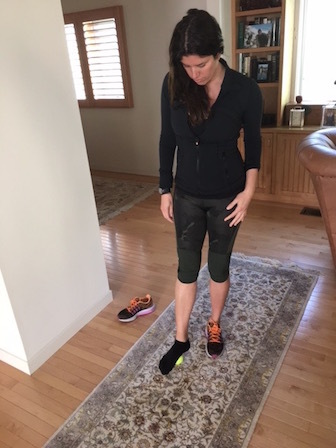
Sitting on a chair, or standing against a wall, put a tennis ball under one foot and roll it gently against the fascia under the foot. If you are flat footed, be sure to hit the medial longitudinal arch, or the middle of your foot right by your big toe. Hold and breathe.
Calves: 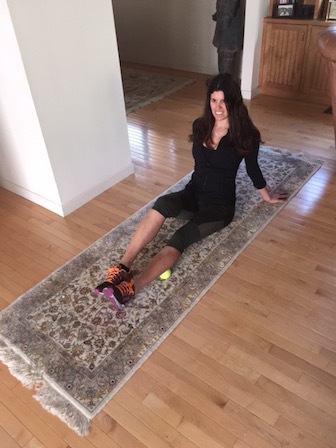
Sitting up against the wall, put the tennis ball on the tightest part of your calves. Move the ball to various spots along your calf.
Hamstrings: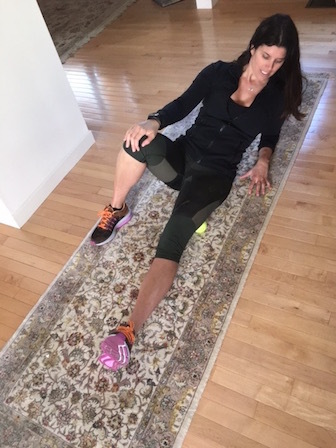
Slide the ball under your hamstrings, or the back of your thigh, and find a place that is tight. Work your way up the hamstring finding places that need release.
Glutes:
Place the ball on the upper outside quadrant of your glute and place all your weight onto the ball. Find a couple of places every 30 seconds and breathe into this space.
TFL: 
Lying on your back, place your hands on your hips and internally rotate your feet. You will feel a muscle contract, by your front pant pockets. That is your TFL. Once you identify where that is, take the tennis ball, place it on one side, and rotate to your belly so that you are lying directly on top of the ball, with pressure application to the TFL. (*TFL is your tensor fascia latte)
Quads: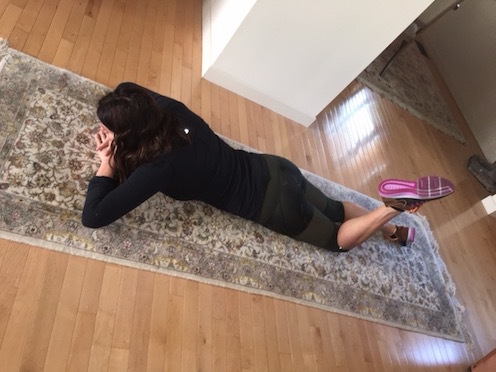
Flip over onto your belly and place the tennis ball above your knee and roll the ball around until you find a point of tension. Move the ball to various spots along your quads.
IT Band: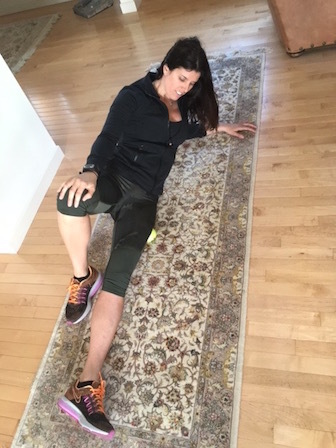
This band of fascia runs from the outside of your hip all the way to your knee. If it is tight, it can work its way into the knee causing tracking issues. Therefore, you must keep the length tension of the IT band optimal by foam rolling it or using the tennis ball.
Lower Back: 
Find the space between the top of your hip girdle and right below your last rib. Place the ball in that area to open up the quadratus lumborum and other surrounding lower back muscles. Be sure to not place the ball on the last rib for it is delicate.
Upper Back: 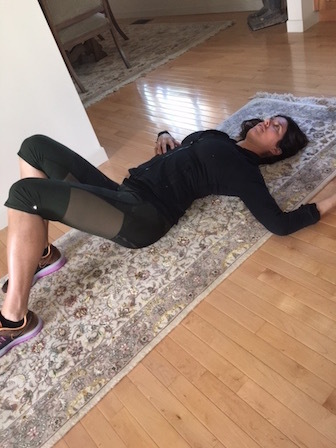
Find your scapular or shoulder blades and place the ball to the side of your spine on the fascia of your shoulder blade. Move the ball up towards the upper back and lay on the ball where you feel tension. Breathe into this and relax your upper body. You might need to support your neck with a pillow. Be relaxed.
Upper Traps: 
On the tops of your shoulders, many people experience tension from poor posture and chest breathing. Take the ball and put it right onto the top of your shoulders, and while keeping your gaze at the sky (do not rotate your head), lift your hips skyward so that you can apply pressure into your shoulders which will help release your neck muscles. Move up to various places on your upper traps.
Pecs: 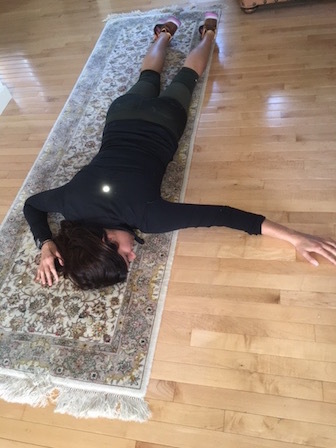
Flip back over to your belly and put the ball right under your clavicle bone on your pecs or chest muscle. Extend that arm out to the side and rest your head in a comfortable position on the ground. Work the ball along the length of your pecs for a few different spots.
Photo Credits: Mr Smith